Narayana ( Samartha Ramdas ) was born as the second son of a devotee of Lord Surya, Sooryaji Pant Thosar and Ranoobai at Jamb ( a village on the bank of river Godavari ). He was born in Sri Ramanavami during the summer of 1608 AD. Narayana was a naughty boy and was known for his never-ending pranks. He did not care much for his own future. Some of the well-wishers stated that an early marriage might settle him, but the boy was not interested in tying the knot. He would hide somewhere in order to evade this subject. It so happened that he was hiding in a Hanuman temple. Thereafter his thoughts were enveloped by Lord Hanuman, the lifelong celibate devotee of Lord Rama. Hanuman had a great intellect, and he had traced Sita, the wife of Rama. His decision to stay celibate by taking the vow of Brahmacharya inspired the young Narayana. The youngster was able to realize the purpose of his life that day.
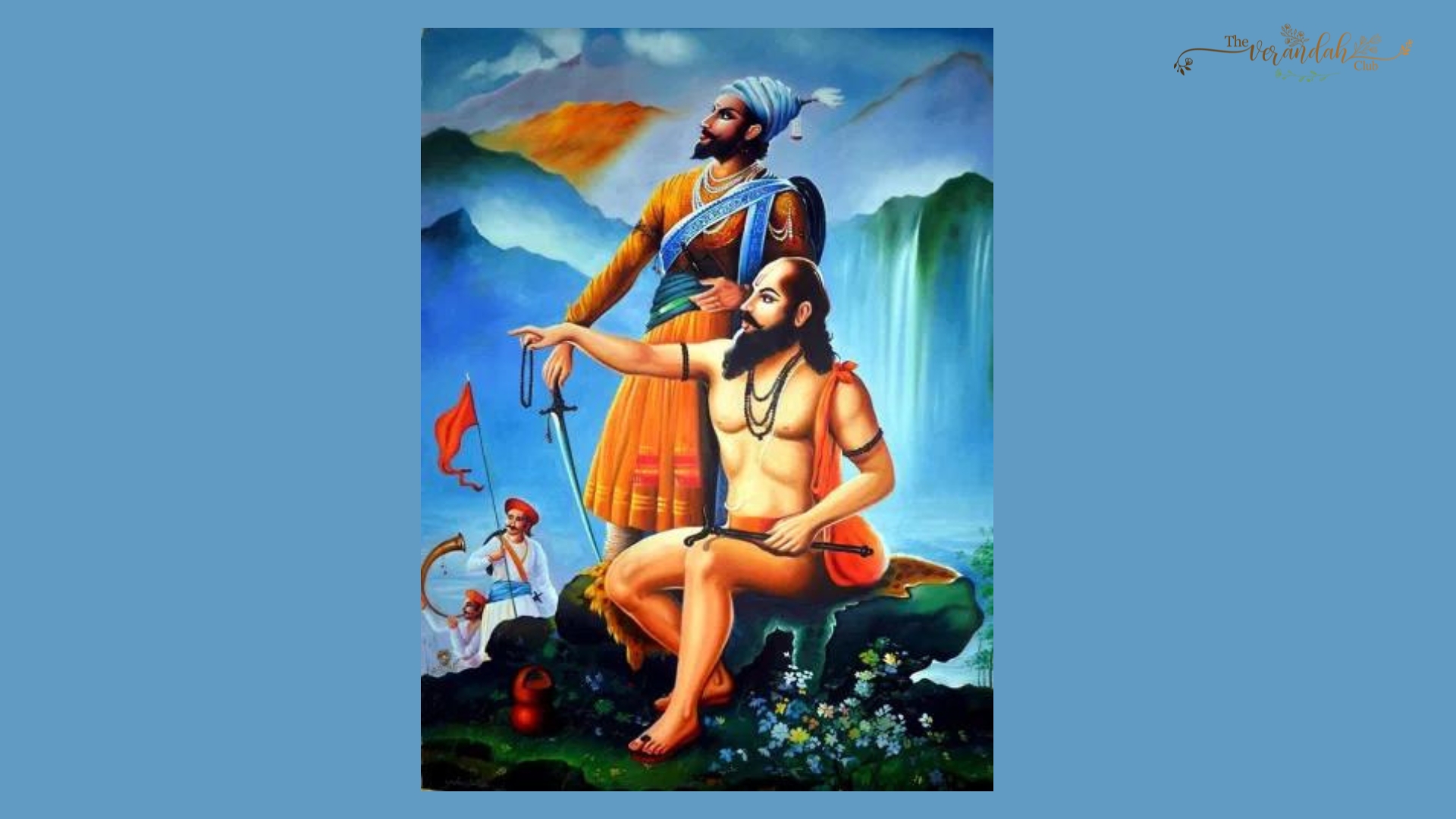
The naughty Narayana became quiet, and he appeared to be thinking about something all the time. His brother Gangadhar got married, and this was followed by the passing away of his father. His mother, Ranoobai, wanted to see Narayana settle in his life. The wedding got fixed, and the auspicious moment was fast approaching. Only a yellow cloth screen ( Antahpata ) separated the bride and the groom. The priest was uttering the ' Mangalashtaka ' in a high pitch. Narayana became alert when he heard the words ' Sumuhurte Saavadhana '. ' Saavadhana ' meant beware. He ran away that very moment and went off to Panchavati on the banks of river Godavari. Narayana came back one day to meet his mother. The purpose of his life and the path to attain the same became clear to him at sacred Nasik.
Narayana spent about 12 years of his life at sacred Panchavati. He would get up before sunrise, have a dip in the holy river and perform Sandhyavandana and meditation. Narayana would stand in knee-deep water for several hours every day, and he would use this time to think of God. The fish found in the waters would bite his legs, but that did not deter him. He would visit a few households and beg for food. The food thus received would be divided into three parts, one part for the cows, the second part for the fish and the third part for himself. His devotion impressed everyone and his intense devotion made his body shine like gold. He had also been endowed with a sharp intellect as a consequence of the same. It was at Taakli that he attained enlightenment, and he installed a statue of Hanuman on this spot. This took place when he was about 24 years of age.
The devotee of Prabhu Sri Ramachandra understood that love for the motherland and the mother was most important. Thereafter he called himself Ramdas or the servant of Lord Rama. Saint Ramdas began a tour of all the holy places. He studied the condition of the country, and while doing so, he visited Paithan. Ramdas was carrying a bow and some Brahmins wanted to know if he knew how to use it. He immediately shot dead a crow in the direction of one of them. Finally, they asked him to repent for the sin by performing a sacrifice. He did so and wanted to know if he was free from his deed. They stated that he was free, but Ramdas stated that he was free from sin only if the bird came back to life. He lifted it and prayed to Lord Ramachandra, and lo, the bird came back to life and flew away. Thereafter, he came to be known as Samarth Ramdas.
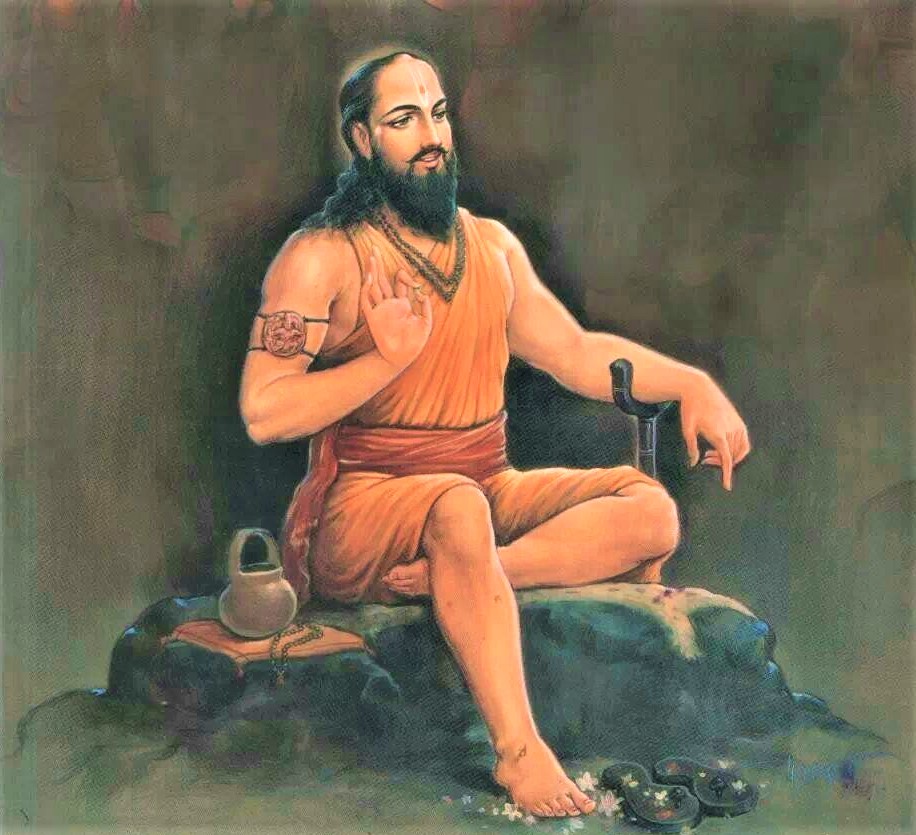 Ramdas travelled for about 12 years and made a number of observations about life in those days. These are recorded in his literary works Asmani Sultania and Parachakraniroopan. He met the sixth Sikh Guru - Hargobind. Samarth Ramdas came over to Mahabaleshwar near Satara and also discovered a few idols of Lord Rama around the same time. Samarth Ramdas was eager to re-establish Dharma, and he understood that unless the country was resilient, it was not possible to attain this goal. He went on to establish several monasteries across the country. By the year 1648, he had an idol of Lord Rama installed at a newly built temple at Chapel near Satara. Samarth Ramdas established 11 Hanuman temples in Maharashtra in a single decade: 1644 - 1654. A temple of Durga was constructed at Pratapgad near Satara. Samarth Ramdas built a number of temples all around the country. He was also devoted to Vittala of Pandarpur.
Ramdas travelled for about 12 years and made a number of observations about life in those days. These are recorded in his literary works Asmani Sultania and Parachakraniroopan. He met the sixth Sikh Guru - Hargobind. Samarth Ramdas came over to Mahabaleshwar near Satara and also discovered a few idols of Lord Rama around the same time. Samarth Ramdas was eager to re-establish Dharma, and he understood that unless the country was resilient, it was not possible to attain this goal. He went on to establish several monasteries across the country. By the year 1648, he had an idol of Lord Rama installed at a newly built temple at Chapel near Satara. Samarth Ramdas established 11 Hanuman temples in Maharashtra in a single decade: 1644 - 1654. A temple of Durga was constructed at Pratapgad near Satara. Samarth Ramdas built a number of temples all around the country. He was also devoted to Vittala of Pandarpur.
Samarth Ramdas wrote a lot and his works included Dasbodh, Sunderland, Karunaashtakas, Yuddhakhand, Poorvarambh, Antarbhav, Aatmaaram, Chaturthman, Parchman, Manpanchak, Janaswabhawgosavi, Panchmanasi, Saptsamasi, Sagundhyan, Nirgundhyan, Junatpurush, Shadripunirupan, Panchikaranyog and Manache Shlok. His compositions included numerous aarti worship rituals. Many believe that ' Raghupati Raghava Rajaram ' is based on the work of this great soul. Samarth Ramdas was not pacifist, and his writings include strong expressions which encouraged people to use military means to counter aggressive Islamic marauders. The original copy of Dasabodh is placed in a mutt in Domgaon, a village in the present-day Osmanadad district.
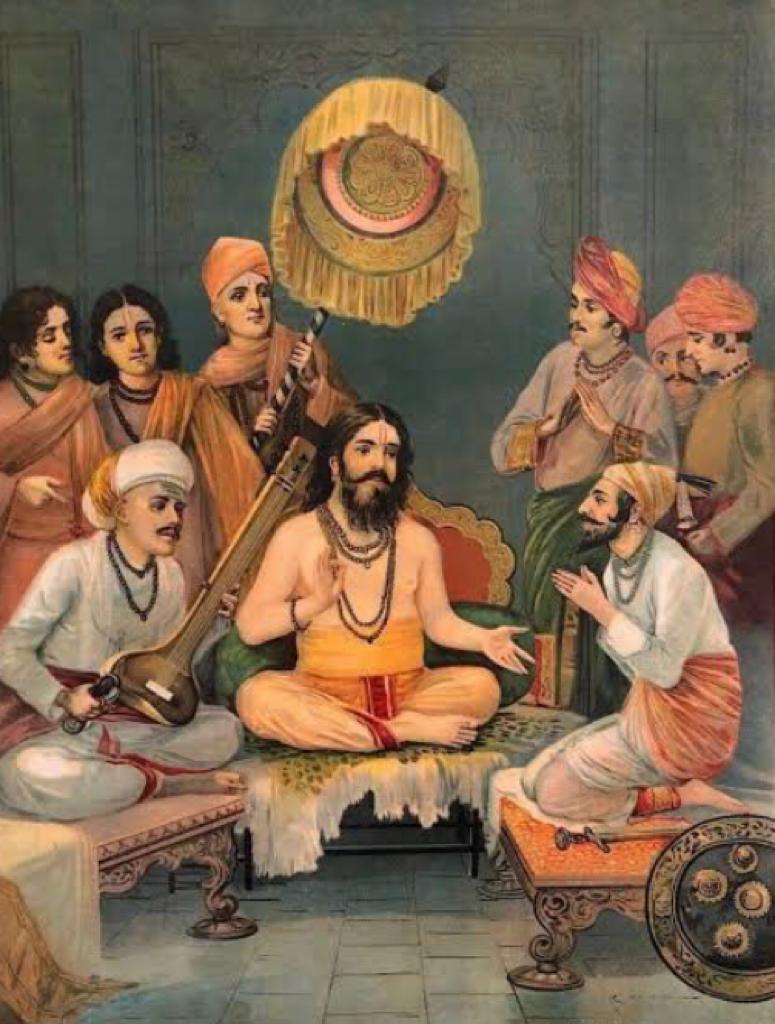 Vinayak Bokil and Balacharya Khuperkar Shastri stated that Ramdas was a proponent of Dwaita, a philosophy proposed by Saint Madhvacharya. He was an exponent of Bhakti Yoga, and he believed that total devotion to Lord Rama brought about spiritual evolution. The Saint felt that physical strength and knowledge towards individual development were the keys. He admired warriors and understood the importance of their role in preserving society. Ramdas was of the opinion that Saints should not withdraw themselves from society and that they should ensure moral transformation. He wanted the Hindus to become united and pre-eminent once again. Ramdas was not for differentiation on the basis of caste. He advocated for the abolition of social classes. Ramdas had classified his teachings into four headings - Harikatha, Politics, Eternal Vigilance and Intelligent Living.
Vinayak Bokil and Balacharya Khuperkar Shastri stated that Ramdas was a proponent of Dwaita, a philosophy proposed by Saint Madhvacharya. He was an exponent of Bhakti Yoga, and he believed that total devotion to Lord Rama brought about spiritual evolution. The Saint felt that physical strength and knowledge towards individual development were the keys. He admired warriors and understood the importance of their role in preserving society. Ramdas was of the opinion that Saints should not withdraw themselves from society and that they should ensure moral transformation. He wanted the Hindus to become united and pre-eminent once again. Ramdas was not for differentiation on the basis of caste. He advocated for the abolition of social classes. Ramdas had classified his teachings into four headings - Harikatha, Politics, Eternal Vigilance and Intelligent Living.
Women were encouraged to participate in religious work, and they were placed in positions of authority. He had 18 female disciples, and one Veenabai headed a mutt near Miraj near Sangli, while one Akkabai managed one near Chapel. He felt that equal social status for women was a prerequisite for social development. He gave a lot of importance to aesthetic handwriting. Samarth Ramdas was the preceptor of Chatrapati Shivaji and his son Sambhaji. He had called the Maratha Empire as Ananda Vana Bhuvana. Ramdas gave Shivaji a coconut, a fistful of mud and two fistfuls of sandstone. The coconut signified auspiciousness, the mud symbolized the motherland, and the sandstone signified the impenetrable fort.
The meeting with Guru Hargobind left an everlasting impression on him. He wanted to know why the Guru possessed arms and an army. Guru Hargobind stated that arms meant protection of the good against tyranny. He told Ramdas that Guru Nanak had only renounced his ego and not the world. This impressed Samarth Ramdas. He moved all over India and resided in caves ( ghal in Marathi ). He passed away at Sajjangad in 1682. The great soul had stopped consuming food five days prior to his death. This practice is known as Prayopaveshana. Samarth Ramdas had advised Sambhaji Maharaj about kingship and good conduct. Chatrapati Sambhaji adhered to his advice right earnestly.
The cultural legacy of Samarth Ramdas is very huge. His Maruti Stotra is recited by school kids and athletes in traditional gyms known as Akhadas. Veer Savarkar, the proponent of Hindutva was inspired by Dasabodh. The Ganesh aarati of Ramdas is now part of several rituals. Samarth Ramdas inspired several 19th and 20th-century thinkers. They included Bal Gangadhar Tilak, Vishwanath Rajwade, Ramachandra Ranade, Keshav Hegdewar, Nana Dharmadhikari, Gondavalekar Maharaj, Bhausaheb Maharaj, Ranjit Singh and many others.
The influence of Samarth Ramdas was profound on Keshav Hegdewar, the Founder of the Nationalist organization - Rashtriya Swayamseval Sangh ( RSS ). Samarth Ramdas was quoted by this Nationalist on a number of occasions. According to one diary entry dated 4/3/1929, " Shri Samarth did not want anything for himself. He mindfully guarded against self-pride, which could result from success and greatness. Ingraining this discipline, he devoted himself to the welfare of his people and self-realization ".
The religious discourses and Keertans of Samarth Ramdas inspired and thrilled people. Ramdas etched these words in them, " Do not search for Moksha after forgetting your motherland, Bharat. Lead a pure life. First of all, you have a duty towards your family and your motherland. Ensure that you have completed the above before turning your thoughts towards salvation ".
The Life and Teachings of Samarth Ramdas ( 1608 - 1682 AD ) are relevant even today.
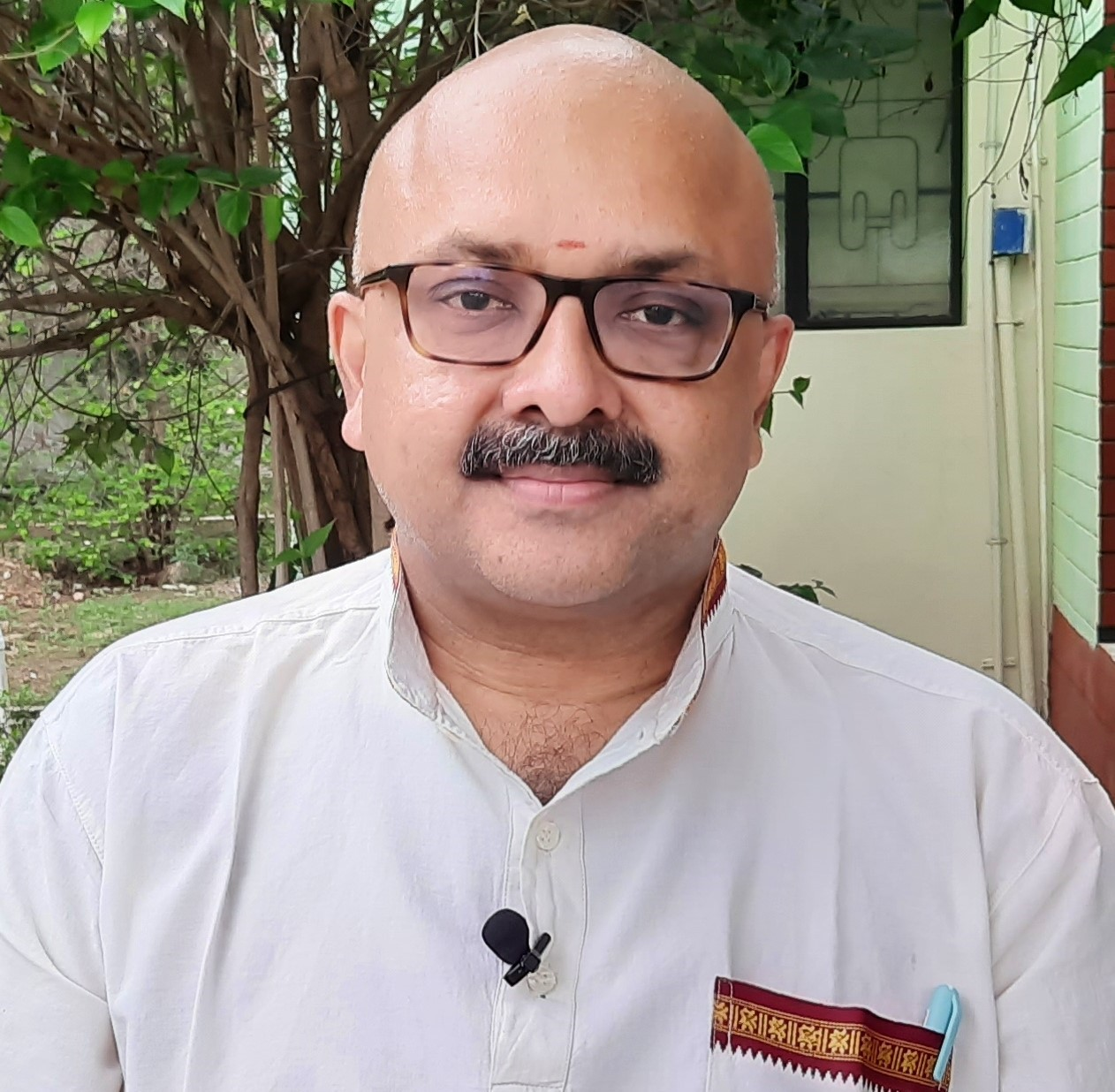 Mr. Rajesh Govindarajulu is one of the founding members of The Verandah Club Pvt. Ltd. He is a leading columnist, historian, jeweler, entrepreneur, and a heritage enthusiast who is earnestly working to revive the past in the light of the present. Experiential learning about the history of Coimbatore is his main course of interest and he is also a panel member of many colleges in the city.
Mr. Rajesh Govindarajulu is one of the founding members of The Verandah Club Pvt. Ltd. He is a leading columnist, historian, jeweler, entrepreneur, and a heritage enthusiast who is earnestly working to revive the past in the light of the present. Experiential learning about the history of Coimbatore is his main course of interest and he is also a panel member of many colleges in the city.
NEXT ARTICLE
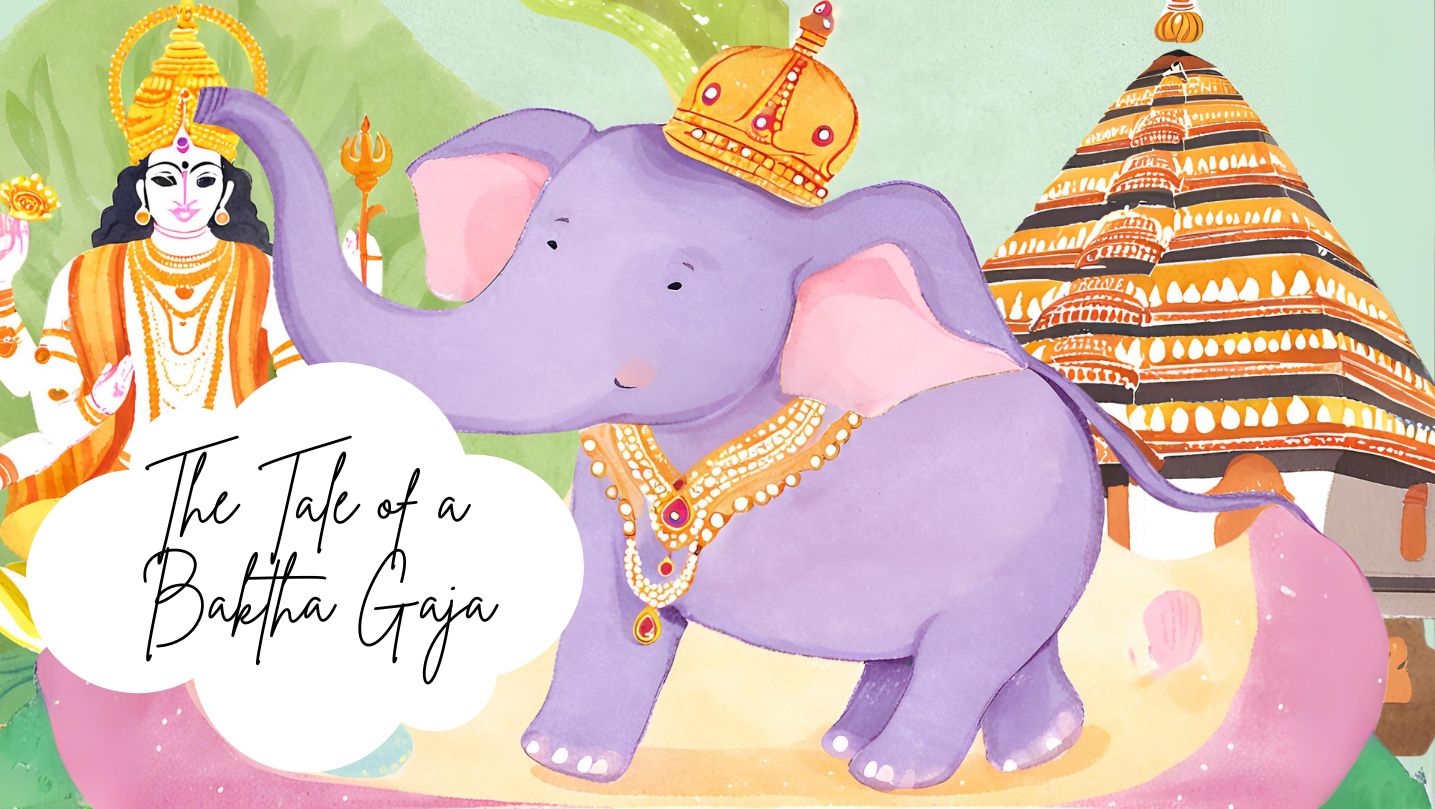
In the lush, green heart of Kerala lived an elephant who became a living legend - a tale of an elephant turned into a bakth. His name was Keshavan, bu...
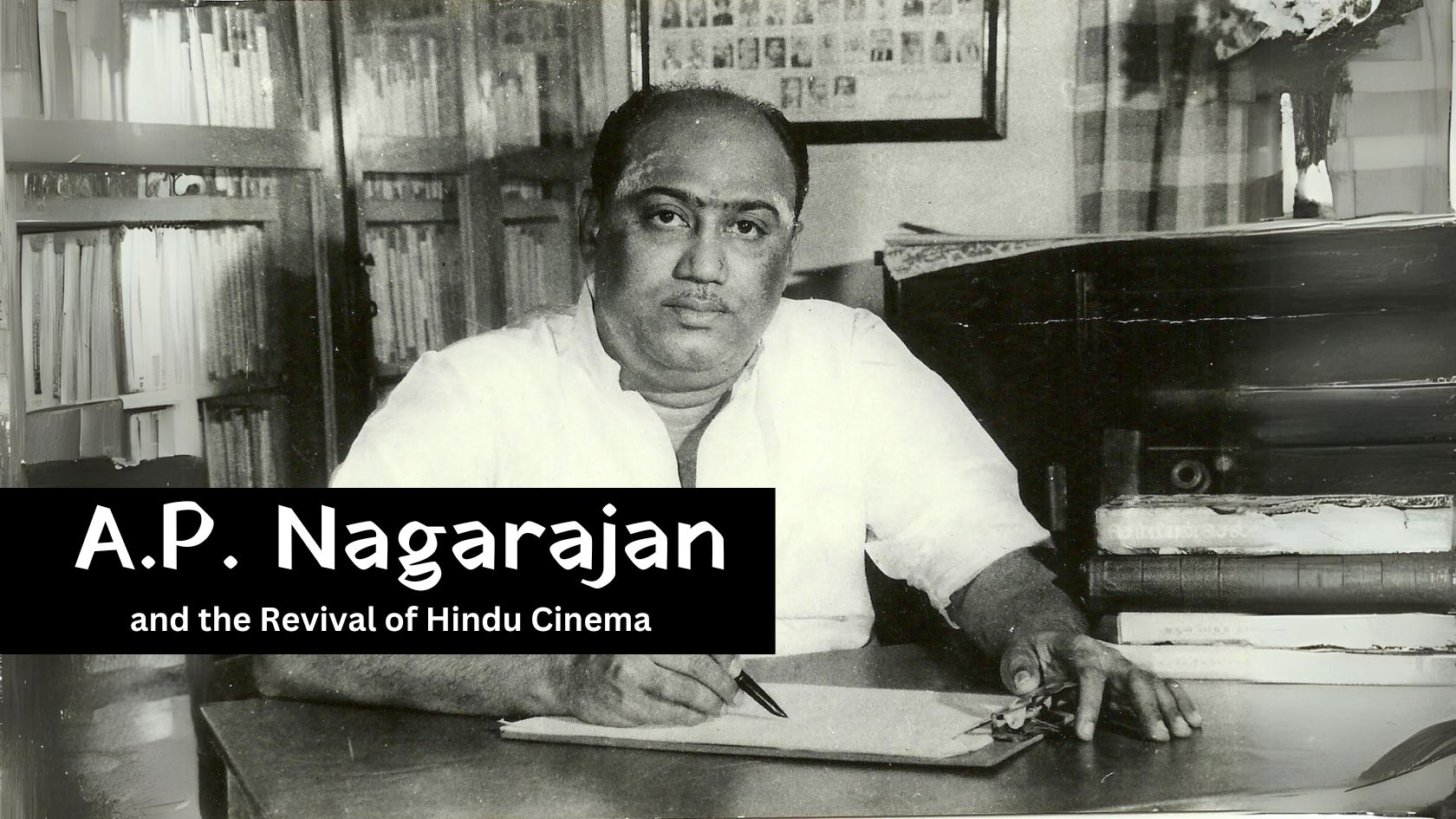
In the early days of cinema, both silent and talkie films thrived on puranas and ithihasas. However, as the years passed, especially by the late 1950s...

Life often presents us with choices that test our resolve, faith, and priorities. Attending the Prana Pratishtha of the Ram Lalla in Ayodhya had alway...